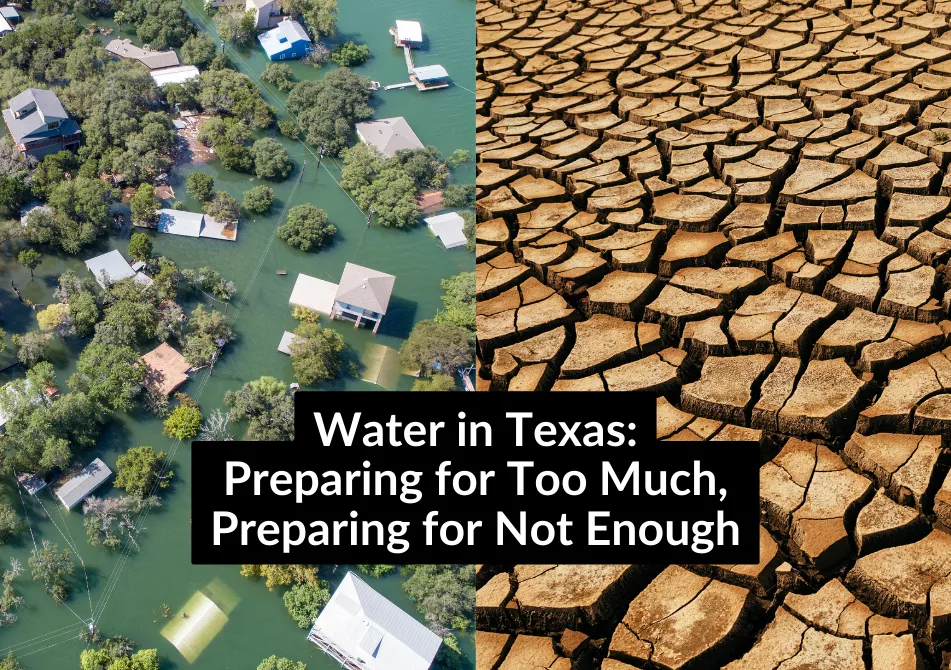
Images via Canva Pro
By Cyrus Reed
Water is in the news these days. From devastating droughts to burgeoning demands – especially with an industrializing coast – to the major flooding events in the Houston area, Texans are rightly concerned about the management, availability, and in some cases the need for protection from water. Recently, the Texas Water Development Board (TWDB) began two major efforts to receive input and ultimately implement policies to deal with water. In addition, the Senate Committee on Water, Agriculture and Rural Affairs, led by Senator Charles Perry of Lubbock, held an interim legislative hearing last week to talk about water supply, coordination, and reliability issues.
First, as a result of legislation passed in 2019 after the devastating hurricanes of 2017, the TWDB is required to produce a State Flood Plan by the end of the year, including policy recommendations to the Legislature about how to better prepare and manage future flood events. To their credit, the TWDB asked the public for input on some proposed policy issues, ranging from increasing county authority over land use, to better building codes, to needed funding for structural and non-structural infrastructure. After receiving the input, the TWDB produced a draft State Flood Plan, which was released recently and is available here. Sierra Club worked with our partners to submit substantial comments to the Board, highlighting in particular the need to authorize modern statewide codes, nature-based solutions to flooding, and improved county authority. Now that the draft plan has been released the public has another opportunity to comment until June 17th using this link. Finally, a public meeting will be held on May 30th in Austin.
Second, in response to the passage of SB 28 in the last legislative session, and passage of Proposition 6, which authorized an additional $1 billion for water conservation, water supply, and a public water awareness campaign, the TWDB opened up public input through three surveys. In response, the Sierra Club worked closely with our partners in the Texas Living Waters Project, including the National Wildlife Federation, The Nature Conservancy, the Hill Country Alliance, and the Galveston Bay Foundation to submit both surveys online but also submitted a letter with answers to the survey. We emphasized the need to spend much of the funding on conservation, water loss, and water use projects, and expressed concern about use of the New Water for Texas Fund for produced water or desalination projects when the regulatory framework has yet to be developed.
Next for the TWDB will be developing the actual rules to implement the three programs authorized by Proposition 6, meaning there will be additional public input opportunities.
Finally, the Senate Committee on Water, Agriculture, and Rural Affairs held an all-day hearing on water supply and reliability which was chock full of presentations on water supply options. A video of the hearing can be found here. While Sierra Club did not testify in person, we did submit written testimony to the committee which can be found here. We emphasized the need to invest in water conservation projects, fixing water loss, and water reuse projects before turning toward more controversial water supply options like desalination (removing salt from seawater) and produced water (a byproduct of oil and gas extraction).